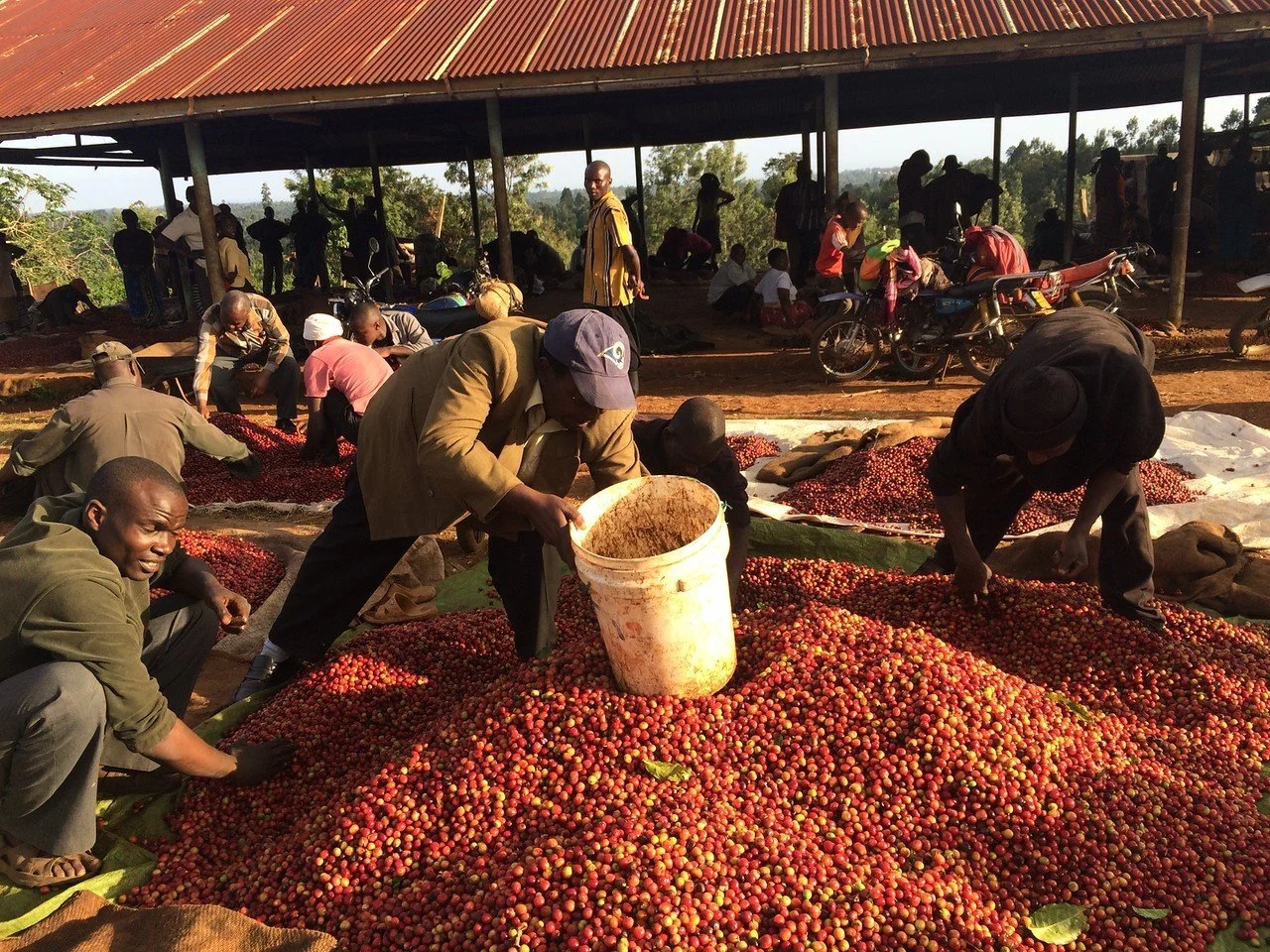Thimu Factory is one of twelve wet mills operated by the Baragwi Farmers Cooperative Society in Kirinyaga, Central Kenya. Situated on the slopes of Mount Kenya, the cooperative includes around 3,000 smallholders who deliver their cherries to the Thimu wet mill.
The factory is located at an altitude of 1,600–1,800 meters above sea level. The main coffee varieties grown are SL34 (90%), with smaller amounts of SL28, K7, and Ruiru 11.
In this region, the flowering period typically occurs between February and March, with the harvest season following from October to December.
The soil is primarily Nitisol, a red volcanic soil found in highland areas and on steep volcanic slopes. Formed from volcanic rock, Nitisol is known for its favorable chemical and physical properties compared to other tropical soils.
Before processing, farmers hand-sort the cherries to remove unripe and overripe ones. A 3-Disc Agaarde disc pulping machine is used to remove the skin and pulp from the cherries. The coffees are then graded by density into three categories by the pulper: Grade 1 and 2 are considered higher quality and are fermented separately, while Grade 3 is categorised as a lower grade.
The coffee is then dry fermented for 18-36 hours in concrete tanks under a roof that provides shade for better temperature control during fermentation. After fermentation, the coffees are washed and again graded by density in washing channels. They are sometimes soaked in clean water overnight.
The coffee is then sun-dried for 12 to 20 days on African drying beds. The drying time will depend on weather conditions. The coffees are covered with plastic during midday and at night for protection.





